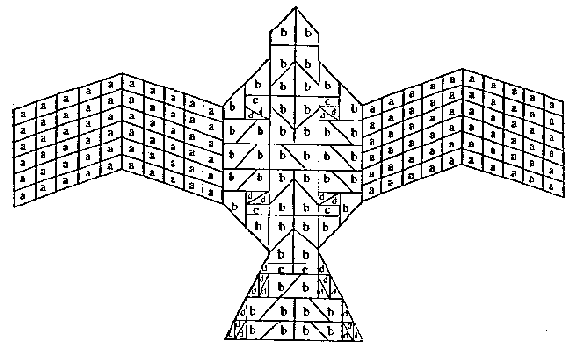
| Geometry of Vedic Altars |
|---|
University of Manchester, United Kingdom
The earliest material evidence
of Indian mathematics is found among the ruins of the Harappa
civilization, dated at the start of the third millennium B.C.
An elaborate system of weights and measures related to binary
and decimal series' has been brought to light. A notable feature
of the Harappa culture was its use of kiln-fired bricks. These
provide a link between the "frozen" geometry unearthed
by archaeologists and the earliest written geometry, a guide
to constructing Vedic brick altars .
.
TheSulbasutras and theSathapatha Brahmana contain valuable information about the geometry of ancient India, including instructions for constructing sacrificial altars (vedi) and locating sacred fires (agni). The altars used during Agnicayana, a 12-day ceremony, are especially interesting in terms of geometry. The procedures described for their construction involve methods for approximating the values for the square roots of 2 and 5.
One of the most elaborate public altars was shaped like a giant falcon poised for flight. Its shape and construction were minutely prescribed, while its height could be varied for special occasions. Mathematical problems of its construction involved finding a square equal in area to two or more given squares, and converting other geometrical shapes into a square of equal area, or vice versa. Solutions were achieved through the principle of dissection and reassembly and ingenious algorithms, including the so-called Pythagorean theorem.
There is a view that Indian mathematics originated in the service of religion, but the magic and religious beliefs surrounding the Vedic rituals may be overly emphasized when considering the origins of Indian mathematics. The rituals associated with the construction of fire altars may be looked at from two standpoints. The first is from the standpoint of the beliefs connecting the shapes of altars with the specific desires to be fulfilled by their use in the sacrifices. The second is that of technology pure and simple: How exactly were the altars constructed to conform to specifications for shapes, sizes and number and types of bricks.
Where are the origins of geometry in India? One hypothesis suggests that it must have come into being when there was already an advanced form of brick technology with a long tradition behind it. One may speculate that the geometry eventually codified in the Sulbasutras could have come down from the Harappan period. If this is so, the first and earliest discontinuity in the chronology of Indian mathematics has been filled with the assistance of bricks.
|
George Gherveghese Joseph, "The Geometry of Vedic Altars", pp. 97-113 in Nexus: Architecture and Mathematics, ed. Kim Williams, Fucecchio (Florence): Edizioni dell'Erba, 1996. http://www.nexusjournal.com/conferences/N1996-Joseph.html |
|
|
|
|
